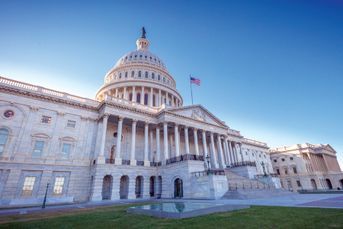Two workplace retirement savings bills introduced in House
The legislation would require most employers to offer a defined contribution plan and simplify some retirement savings rules.
Two bills that would require most employers to offer a defined contribution plan and simplify some retirement savings rules have been introduced in the House by Ways and Means Committee ranking member Richard Neal, D-Mass.
The proposed Automatic Retirement Plan Act of 2017 introduced Friday would require many employers to offer a 401(k) or 403(b) plan, with exceptions for governments, churches, and companies with fewer than 10 employees or less than three years in business. It does not cover employees in a collective bargaining agreement, under 21 or working temporarily.
Employer contributions would not be required, but failure to offer a plan would incur an excise tax.
The bill would make it easier for small businesses to use multiple employer plans, and they would get a startup credit for offering plans. It also would expand automatic savings and escalation features, and increase auto-enrollment rates to 6%. That rate would automatically escalate by 1 percentage point per year, until reaching 10%.
Other plan best practices required by the bill are use of target-date funds or other qualified default investment alternatives, and at least 50% of vested accounts must include a lifetime income component.
If passed, it would become effective in 2020, or 2022 for smaller employers.
Cathy Weatherford, president and CEO of the Insured Retirement Institute, said in a statement that it “offers a common-sense private-sector solution for Americans to save more for their retirement by expanding access for workers who choose to participate in a workplace plan, while preserving employer choice, competition and protections for small businesses.”
A summary is available on the House Ways & Means Committee Democrats website.
The second bill, the Retirement Plan Simplification and Enhancement Act of 2017, would modify the current automatic enrollment safe harbor cap of 10% of pay, and establish a new safe harbor to get employers to defer more than the automatic deferral floor of 3% of salary in the first year.
It would also exempt retirement savings below $250,000 from complicated required minimum distribution rules, and make it easier to take advantage of the saver’s credit. The summary of this bill is also available on the website.
“The retirement crisis in America is real and will only worsen unless we make saving easier and do more to encourage workers to begin saving for retirement earlier,” Mr. Neal said in a statement.
Hazel Bradford is a reporter for sister publication Pensions&Investments.
Learn more about reprints and licensing for this article.






